The Siberian Husky is one of fourteen ‘ancient dog breeds in existence today. With its penetrating gaze, beautiful fluffy coat, and distinctive facial markings, it is easily one of the most recognizable dog breeds around.
Siberian Huskies have unique character traits as well as a unique look. They are energetic, friendly, affectionate, playful, loyal, stubborn, intelligent, independent, and predatory.
History of The Siberian Husky
Origins
The Siberian Husky originates from North-East Siberia. It was bred over approximately 4000 years by the Chukchi Tribal people of North-East Siberia.
Although remains of Laika-type dogs have been found in burial sites by Russian archaeologist N.N. Dikov, dates back 10,000 years.
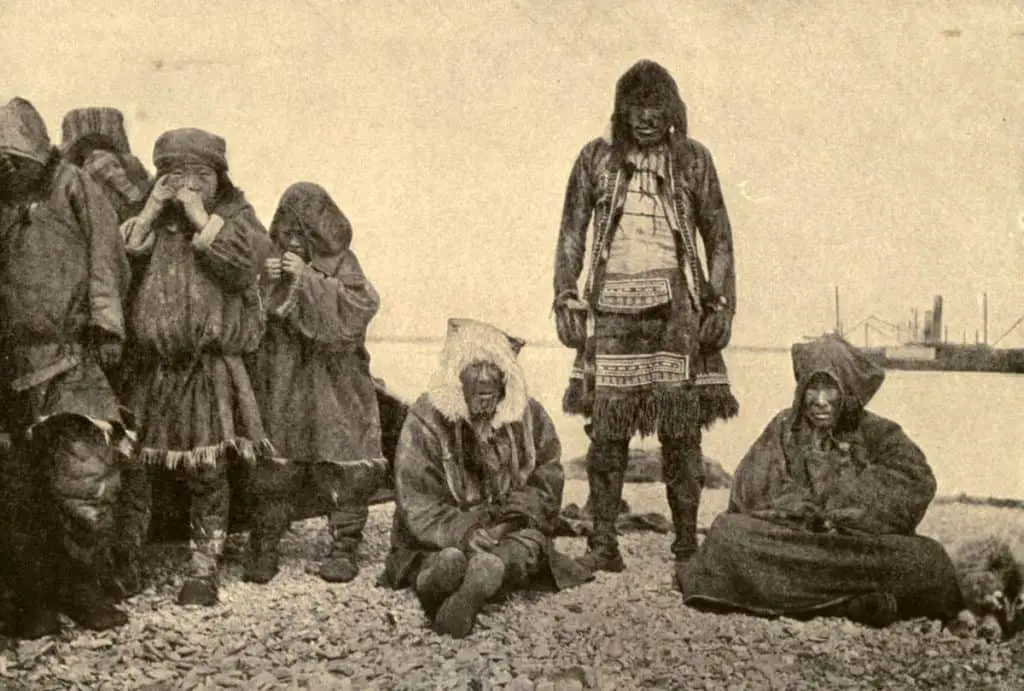
Habitat
The Chukchi area was spread from the Bering Sea across the tundra of North East Siberia interspersed with low mountains down to the Chukchi Sea.
One part of the nomadic tribe herded reindeer inland and another smaller part of the tribe lived on the coast hunting seal, walrus, and whaling.
Both Chukchi tribes used sled dogs to help them in their daily lives.
Isolation
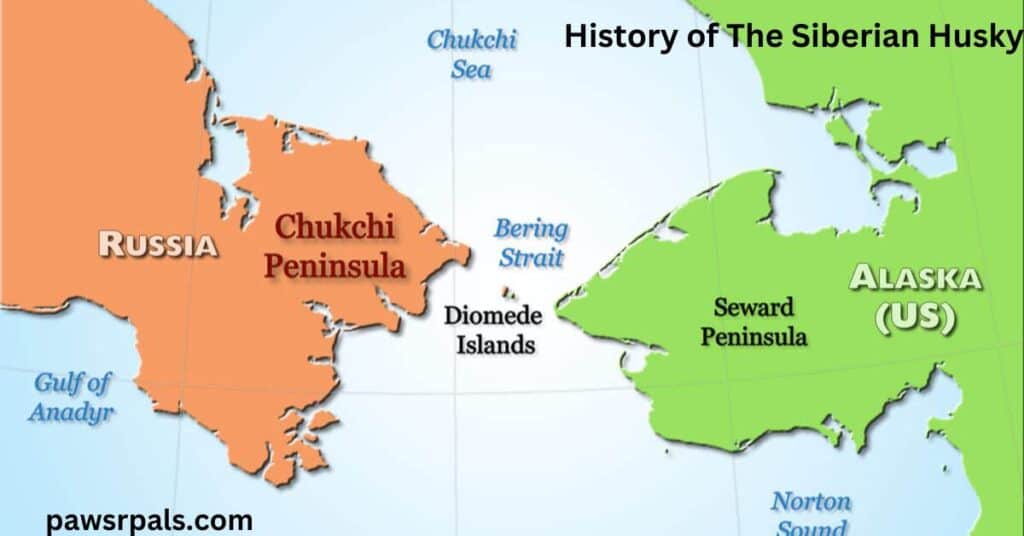
The Chukchi were isolated from the rest of civilization due to the remote location and harsh weather conditions. This actually helped shape the Siberian Husky, as it hailed from two breeds in the area, the Laika and Spitz dogs.
After devastating famines in the 1860s, they bred their remaining dogs primarily with the red fox-like Tungus Spitz to replenish their packs. The combination of these dogs is why the Siberian Husky is so distinctive.
Perfection of character in The Siberian Husky
This isolation also allowed the Chukchi Tribe to perfect the character of their sled dogs to perfectly fit in with the Tribe’s needs.
Because of the extended period of time that the excellent breeding practices were carried out, it allowed the traits to be fully embedded in the Siberian Husky. Those traits are still present in today’s Huskies.
Specific behaviors
The Chukchi tribes were not only after physical hardiness but were also looking for specific behaviors in their sled dogs.
Unlike some of today’s breeders who are more concerned with aesthetics, the Chukchi prized desirable positive behaviors in their dogs. So much so that they are still present in today’s Siberian Husky.
Physical attributes
They needed dogs who could thrive in harsh weather conditions sometimes in temperatures as low as -50 degrees centigrade and as high as 35 degrees centigrade.
Have enough stamina and energy to be able to pull sleds over long distances and rough terrain during such conditions. Be able to survive and function efficiently on the minimum amount of food.
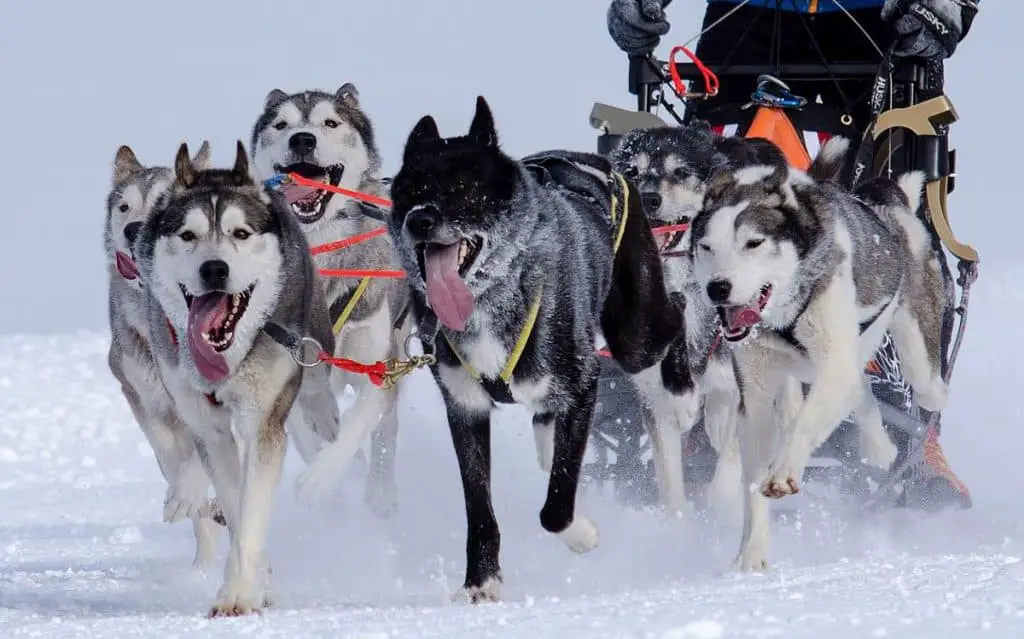
Social
Just as important as these physical qualities they needed dogs who could happily co-exist with humans – especially children. As well as live with lots of other dogs and enjoy it.
They needed their dogs to be able to follow commands but who were intelligent enough to disregard commands that could endanger the pack and the tribe.
Siberian Husky is Friendly and Affectionate
The Chukchi tribe would only breed the friendliest and most playful dogs.
Being able to live in harmony with humans and other dogs was essential to the survival of the pack and the tribe. The dogs also needed to be extremely playful and social.
It would be disastrous if a fight between dogs broke out on a 20 dog sled team whilst it was running.
That could have meant the death of some of the packs and possibly some of the tribe. So the dogs needed to be friendly and social with other dogs for their very survival. Friendly and social dogs lead to great teamwork.
Playmate
Huskies today are still friendly and playful towards other dogs.
They will happily approach another dog to say hello and see if they want to play. They tend to see every dog as a potential friend and playmate.
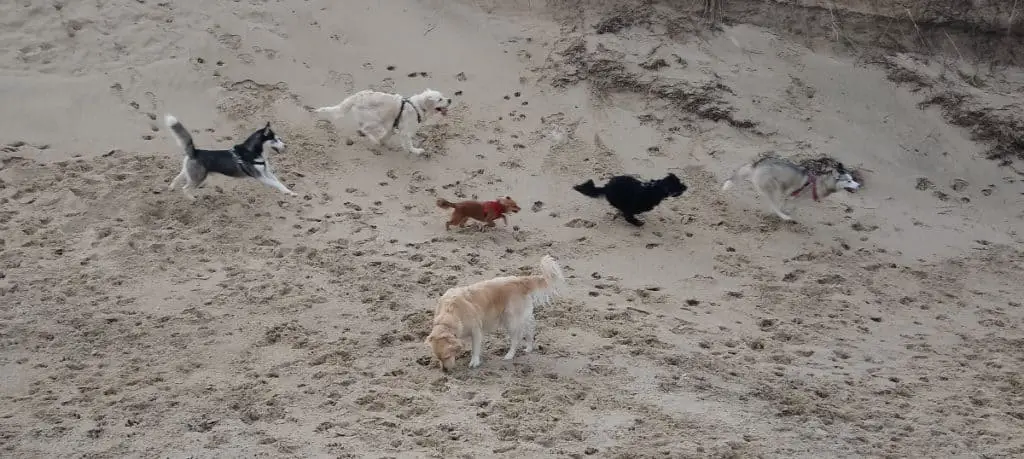
First babysitters
The dogs must be able to live with a lot of humans too, especially children.
The sled dogs weren’t just working dogs. They were human companions and would be trusted to sleep with the Tribes children to help keep them keep warm at night during the harshest winters.
Dogs who didn’t like people or children wouldn’t have helped the children survive the cold winters.
This is another reason that well-bred huskies love children. They may be boisterous and playful but they are also gentle, especially with children. They are incredibly affectionate and enjoy cuddling up and licking. They also enjoy being showered by affection.
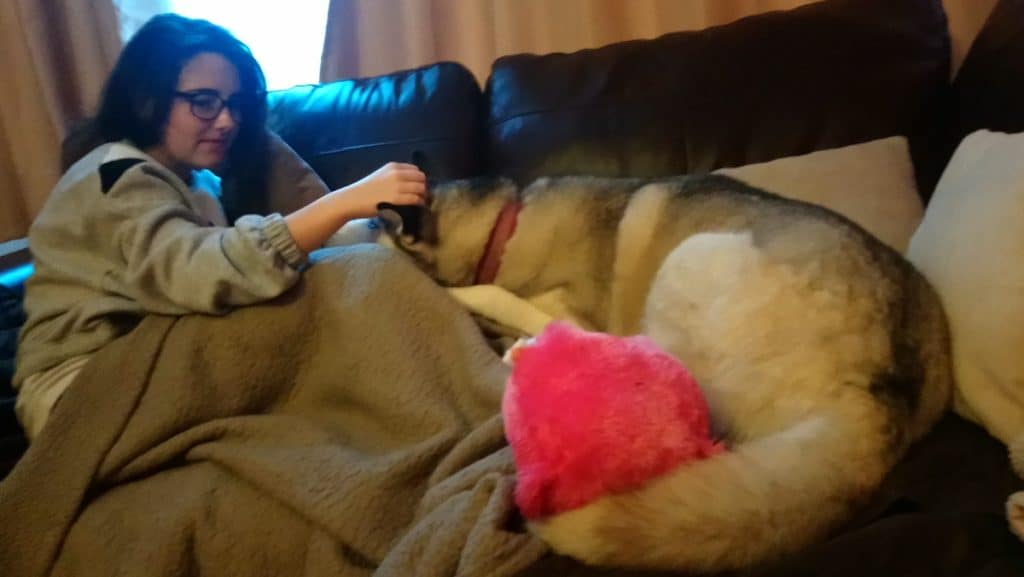
Playful
The dogs needed to be able to pull the sleds over very long distances and enjoy it. Pulling is a play behavior as the only reward is running and going forward.
The sled dogs needed to really enjoy pulling as they would need to pull over long distances in often really harsh weather conditions.
Runners
If you have ever seen Huskies running then you will know that they absolutely love it. It looks like their entire body from face to tail is happy. It’s a joy to see. They will run and play all day, either with humans or other dogs.
This playfulness is what makes them such good sled dogs. They want to run and they want to pull. So for them, sled pulling isn’t work, it’s a game. The best game ever as far as they are concerned.
Playful is best
A dog who doesn’t want to play would be of no use as a sled dog. This is why the Chukchi only bred playful dogs.
This trait is still very present in today’s Huskies. Anyone who has a Husky will tell you how difficult it is to train a Husky not to pull on the lead! Although it can be done. You can read my article on teaching huskies to lose lead walk here.
Misunderstood
Some dog owners don’t like to let their dogs play with Huskies. If you have ever seen two Huskies playing together you can almost see their point of view. When Huskies play with each other they can be really rough, grabbing each other and throwing each other around. They also grumble and make a growling-type noise which can sound as if they are fighting. They aren’t!
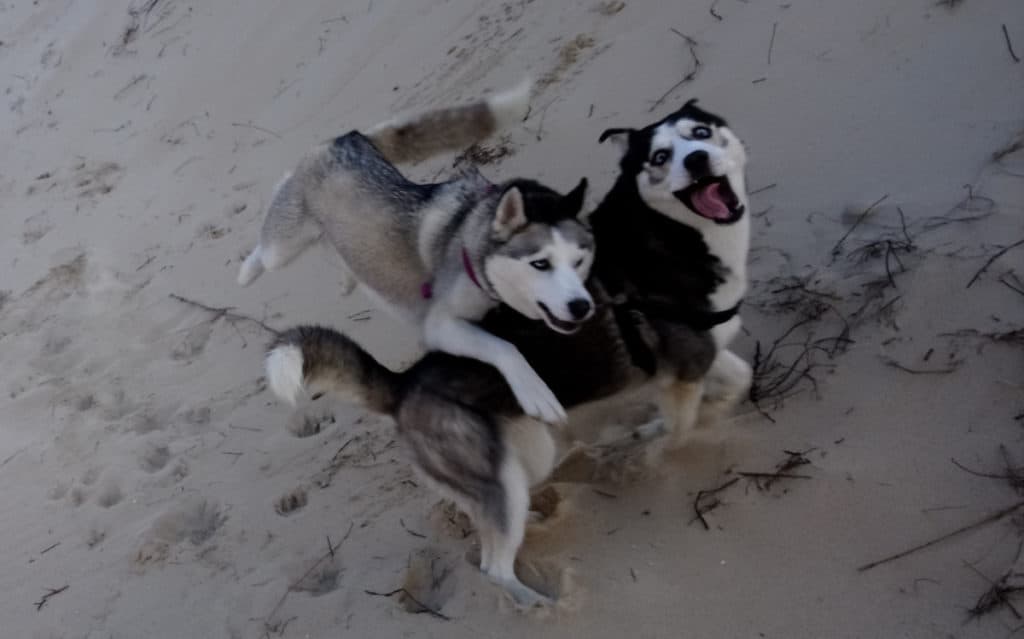
Regulate their play
A well-socialized Husky will adjust its play according to the dog it is playing with. But they can be mouthy when they play. Although they do tend to have really good bite inhibition. Personally, I think that the noise they make puts people off.
Siberian Husky – Play growl vs real growl
I had only ever heard Luna make play growls until very recently, she’s 3 years old now. I had taken her to see an eye specialist in England.
We were staying in a hotel. I had just closed my eyes to go to sleep and I heard the most terrifying deep fierce growling coming from her.
She was stood facing the door, hackles raised, ears forward and body tensed. Her deep rumbling growl was definitely NOTHING like her play growls.
I had never heard that noise from her. I don’t know if it was someone who had gone to the wrong door or just stood too close to our door. But only a deaf person or a complete fool would have tried to come through our door that night.
Loyal Siberian Husky
The Chukchi Tribe treated their dogs with respect. So much so that they believed that two sled dogs guard the gates of heaven and would not allow someone who mistreated dogs to enter.
This mutual respect between the people of the Chukchi and the sled dogs allowed their way of life to survive thousands of years.
Some people think that because Huskies have an independent nature that they are not loyal. Nothing could be further from the truth.
The sled dogs were not chained up but were part of the tribe and roamed freely – however, they didn’t run away, they were there with the tribe. They helped herd and guard reindeer. They helped hunt and they helped watch over the children as well as pulling sleds.
Family
My own Husky Luna is very loyal to us. I am a dog walker so my girl is with me almost 24/7. She is part of our family and comes with us almost everywhere.
She rarely spends any time on her own – an hour or so when I have to go to the supermarket. A Husky who feels like part of the family will be loyal.
On the look-out
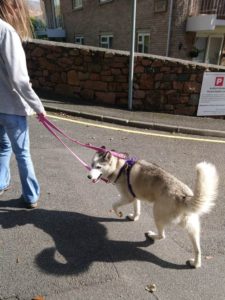
If we are out walking as a family she will often stop and look behind her to make sure that we are all together.
Likewise, if our children are walking in front and they turn a corner, Luna will pull until she has them in her sight. Then she settles down into a nice walk again when she can see them.
Family before running
One day when my children were out on a group walk with me and the dogs. One of them felt ill. I told them to walk back to the car and I wouldn’t take long.
Even though Luna loves to run and play with other dogs, she refused to carry on the walk. She followed the children back to the car.
She HAD to make sure that they were ok. She was showing her loyalty to her family.
The Siberian Husky Is Intelligent
You never see the Siberian Husky on lists of most intelligent dogs. Personally, I think this is a mistake. Intelligence and biddability/instant obedience should not be confused.
The sled dogs were bred to be able to obey commands, but also ignore commands that would endanger the pack and the tribe.
Thinking dog
This means that they were able to quickly process the command and assess whether it was safe to follow the command. This shows a fast, high processing level for the sled dogs.
They were bred to be thinking dogs. Able to make split-second decisions on safe navigation for life or death situations.
Togo
This intelligence was essential on the Nome Diphtheria epidemic Serum Run in January 1925. Leonhard Seppala was crossing the unstable Norton Sound ice sheet in a blizzard with up to 40-mph gales.
He was essentially blind because of the whiteout, and he had to rely on his lead Husky Togo.
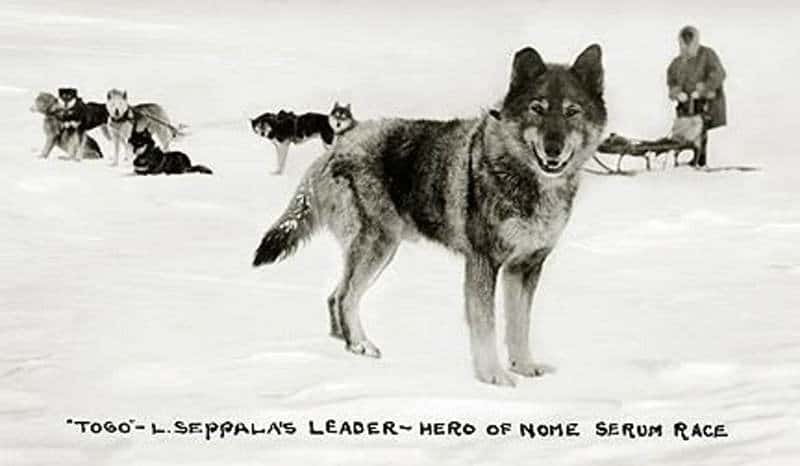
Able to sense changes in the air
Huskies have more tylotrick pads at the base of their whiskers than other dog breeds. These pads allow the dogs to sense the change in airflow.
Add this to the Huskies’ independent intelligence and Togo was able to safely navigate his team across the treacherous Norton Sound ice sheet. Allowing the teams to get the much-needed serum to Nome.
Tricky to train
This intelligence can make Siberian Huskies hard to train. They can learn the commands easily enough, but then they decide whether or not to follow them!
Positive reinforcement works best when training Huskies. You have to get them to want to follow your commands.
Too smart
I have seen this intelligence in my own girl many times. Sometimes positively and sometimes when she decides to carry on doing what she wants to do!
A couple of positive instances come to mind which showed her intelligence and the need to keep harmony in the group dog walks.
Mediator
Sometimes we meet up with a couple of other dog walkers and the dogs all combine. Two dogs used to play vigorously with each other. Sometimes their play would quickly escalate and they would have to be separated. One of the dogs would struggle to calm down when it got too excited.
The two dogs were playing and it was starting to escalate. Before any of us could separate them Luna walked over quite calmly. She took hold of one of the dogs by the scruff of the neck and dragged her away from the other dog.
At a little bit of a distance, she held the dog down with one paw and then started grooming her, getting her to calm down before releasing her.
Luna knew that the play was getting out of hand and decided to act to keep the harmony in the group.
For me, that shows intelligence and a conscious effort to keep the peace in the group. She observed the behaviors, assessed the situation, and decided on a course of action.
Share or no one has it
Another time we had stopped for a water break as it was a warm day. One of the dogs is a real water guzzler and this day he decided to guard one of the water bowls. Normally all the dogs go around taking turns drinking from the different bowls with no issues.
The guzzler started growling at this other dog who approached the bowl. The other dog started growling back, hackles were starting to raise.
Luna calmly walked past the growling dogs, picked up the water bowl, and walked away with it. Both dogs stopped growling and just looked at her. She didn’t look back at them but walked a little distance away from them and dropped the bowl.
I have to be honest, it was one of the funniest things I have ever seen!
As funny as it was, it really showed a conscious decision to put a stop to the negative behavior by removing the cause of the friction. Definitely, a sign of intelligence as far as I’m concerned. The other dog walkers called her the mediator!
Stubborn?
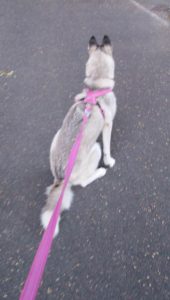
This intelligence is also why the Husky can be seen to be stubborn. If it has decided that it is not going to follow the command, then you will not easily make it follow the command. Trust me I’ve tried!
The pulling power of the Husky is well known. What’s not often mentioned is their brakes. When a Husky puts on its brakes, it will not budge easily. You have to entice them, get them to want to follow your command. I prefer to say my request!
However, this stubbornness has come about because of the dog’s intelligence and ability to make instant decisions on life or death situations.
If the musher is trying to make the dogs go in a direction that the dogs sense to be unsafe, then they have to stubbornly refuse that command. A good musher knows to trust their dog’s instincts.
Siberian Husky Is Independent
Another reason some people don’t think Huskies are loyal is because of their independent nature. This independence is a combination of their intelligence, playfulness, and their high prey drive.
Feed themselves
During times of food shortages, the dogs would be left to find and catch their own food. That didn’t mean that they were not part of the Tribe. The dogs still worked and were companions to the tribe. They knew that in times like this that they had to be independent to survive.
Huskies are happy to take the lead in new situations. Engage in new experiences and meet new people. They also know that they are more than able to feed themselves.
They choose to be part of the tribe/family. I think this independent streak adds to their confidence.
Predatory
Siberian Huskies have a very high prey drive. This high prey drive is often the reason today that they cannot be let off lead unless they are in an enclosed area. When a Husky catches a scent they will go after it.
A husky can be taught recall. It will take a lot of focus work. And you should not allow them off-lead near livestock.
When they were with the Chukchi Tribe the high prey drive was necessary. There were times when the dogs had to hunt for food themselves.
With the harsh conditions, food would be scarce for the tribe and the pack. Their survival depended on them being able to hunt for prey for themselves and the tribe.
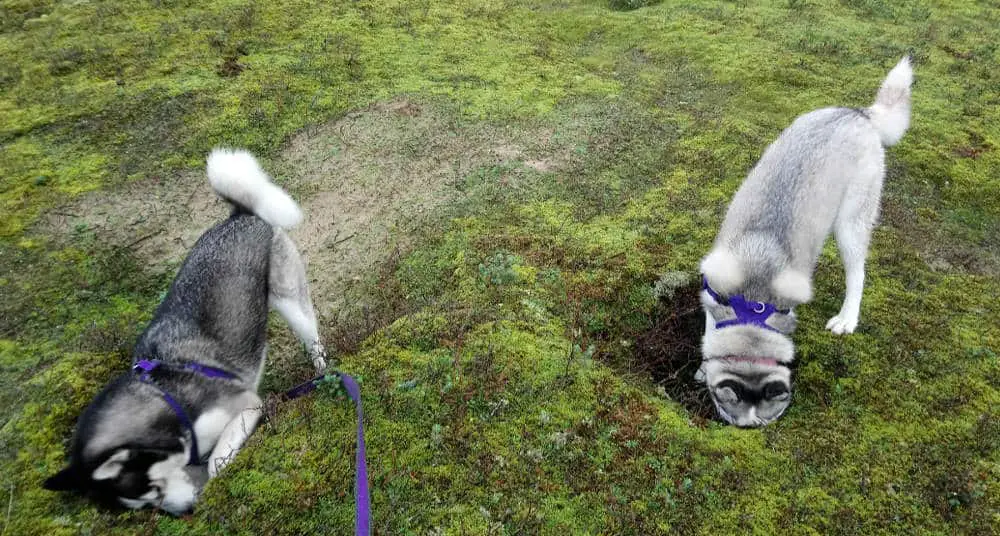
High prey drive
This predatory drive is still present in today’s Huskies. Some people think that Huskies will go after smaller dogs like prey. They don’t, they know the difference between a small dog and prey.
Huskies can live with cats if they are introduced properly and they won’t associate them with prey.
We have a cat and our girl doesn’t see him as prey. However, I would not allow her to go near an unknown cat as I cannot guarantee that she wouldn’t see it as prey.
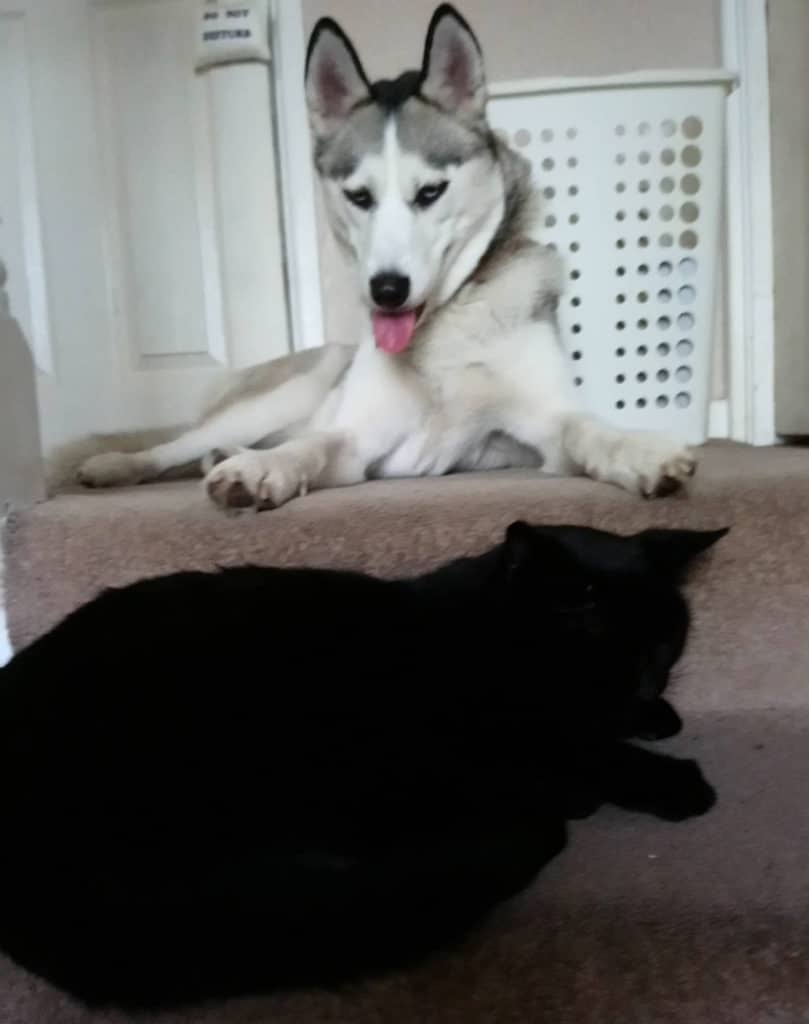
Training
With consistent training, the prey drive can be dampened, but it will never be completely gone. For a Siberian Husky, the prey drive is part of its survival instinct. Bred into them over thousands of years.
Personally, I find Luna’s prey drive to be quite helpful sometimes. Especially when our cat brings home his prey to play with.
Our cat has been known to bring home live prey such as mice and rabbits to play with only to get bored and let them go! Luna is fantastic at finding and catching them.
Loose rabbit
One time our cat brought home a rabbit and let it loose in my children’s bedroom. It was alive enough to make it under their wardrobe before it died.
Luna was going nuts trying to get under their wardrobe so we knew something was there. After moving the wardrobe we found the dead rabbit. Luckily it hadn’t been there long. Good girl Luna.
As much as I would sometimes like my Husky to be instantly obedient, I love her nature. Her quirks and when she chooses to obey me it really makes me happy that she trusts my requests.
I hope that you have found this article helpful in explaining some of the Siberian Husky traits and where they have come from.
I am biased but I think Huskies are fantastic, a combination of a free spirit and a lovable cuddle monster. A dog, but so much more!
‘Dedicated to the indomitable spirit of the sled dogs that relayed antitoxin six hundred miles over rough ice, across treacherous waters, through Arctic blizzards from Nenana to the relief of stricken Nome in the Winter of 1925.
Endurance · Fidelity · Intelligence‘
Before you go, you may find these articles interesting:

Leave a Reply